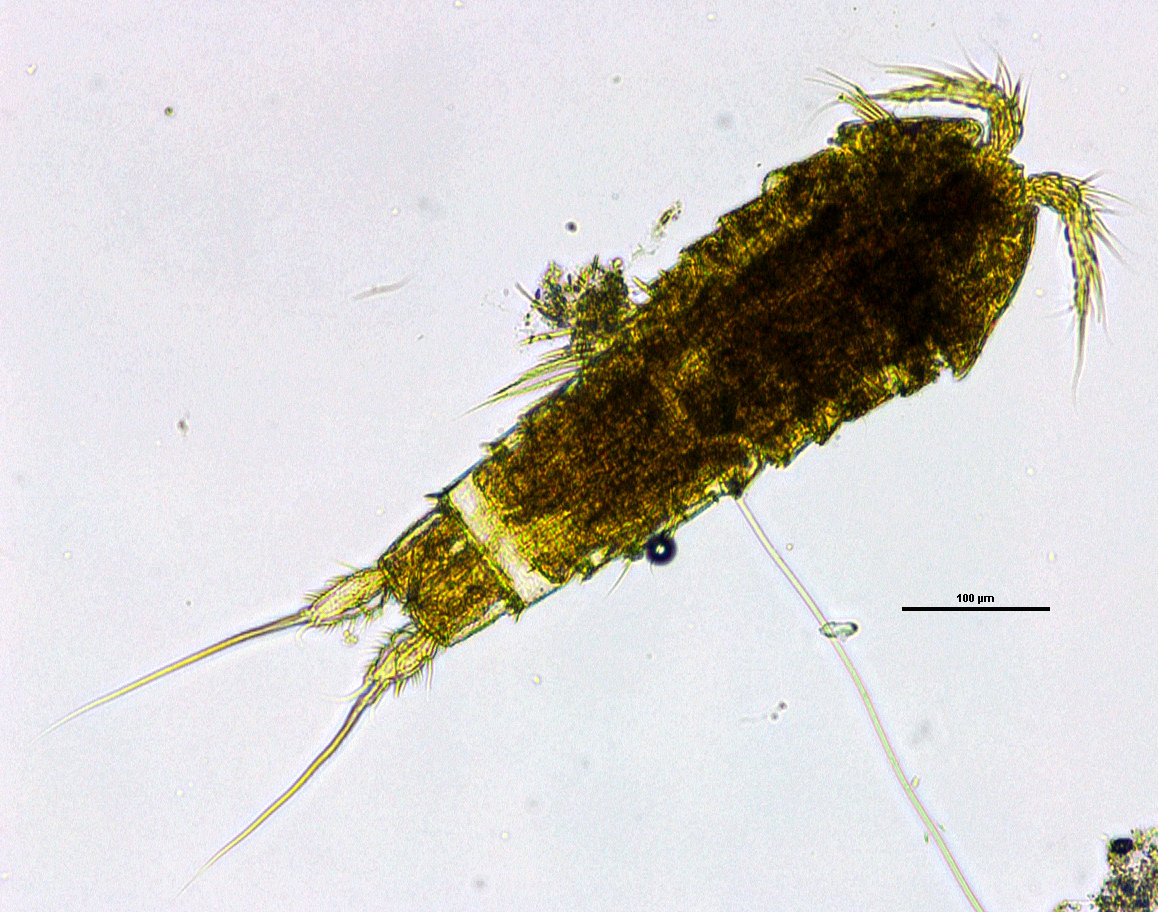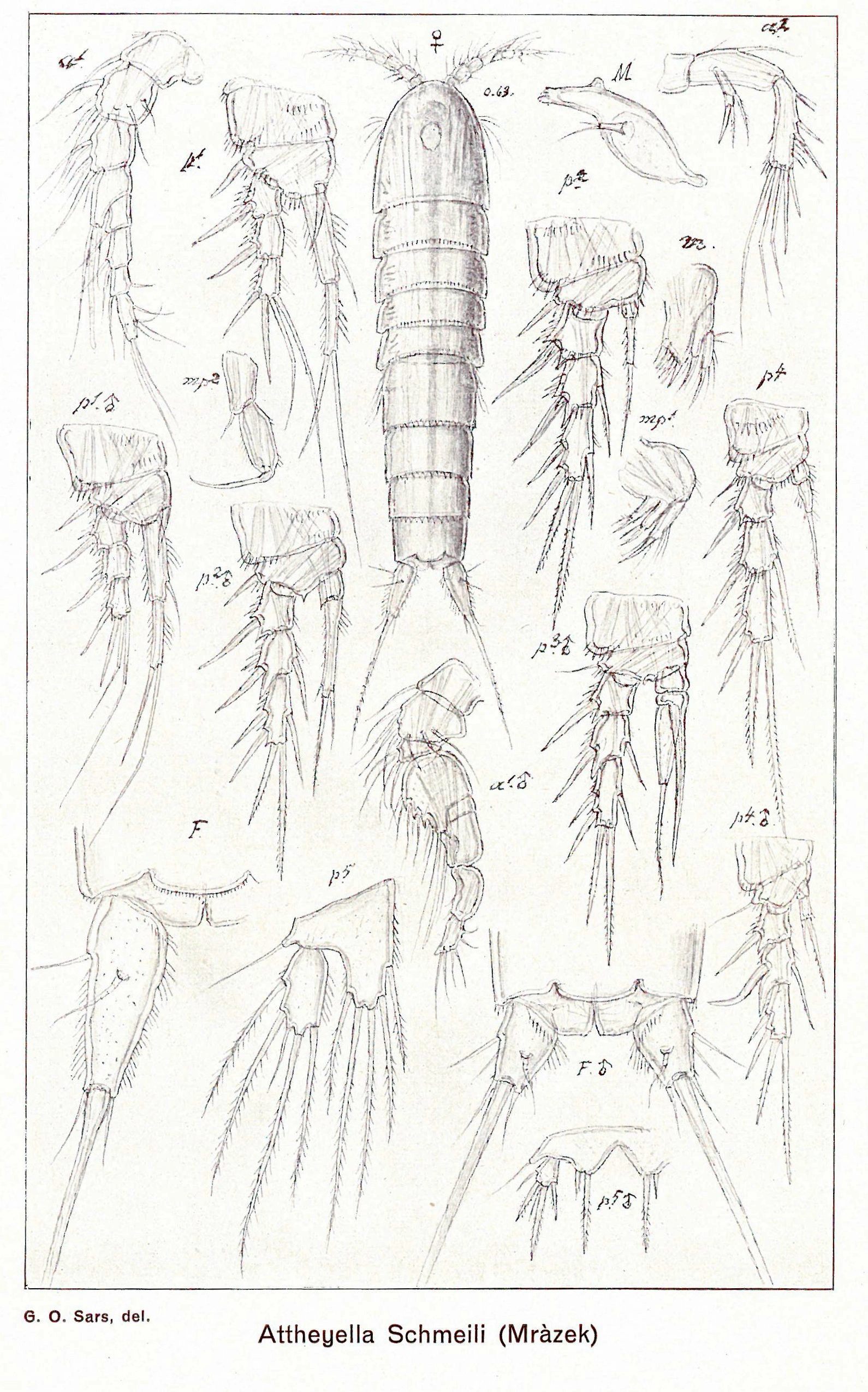Pesceus schmeili
Pesceus schmeili was found by G.O. Sars and since then only recorded once from the littoral of a lake in Middle Norway.
Key characteristics
Pesceus schmeili has a slender and elongated body where the segments are distinctly serrated at the posterior margins. The exopod in the first four legs has three segments, while the endopod is 2-segmented. In the first leg the endopod is very long and slender, exceeding the exopod, while in legs 2–4 the endopod is shorter than the exopod. Its rostrum is broad and short. The operculum is truncated with short hairs, while the caudal ramus is large, up to 3 times as long as wide, being broad at the base and tapering towards the distal part. The inner and outer margins are covered with hairs, and there is a separate row of hairs at the base of the caudal ramus. Both the outer and inner terminal setae are very short, while the middle setae is well developed, long and thick. The antennule consists of eight segments.
Female: Length 0.54–0.75 mm
Male: Length 0.52–0.60 mm
Ecology and distribution
Pesceus schmeili was found by G.O. Sars in muddy bottom substrate in Lake Vansjø, Østfold county (Eastern Norway). Since then it is only recorded once from the littoral of a lake in Middle Norway. The species has a Palearctic distribution. It is a burrowing species, living in sediments and adapted to a low-food environment. Pesceus schmeili is found in lakes, small pools, swamps, caves, brooks, springs, mosses, subterranean groundwater habitats, hyporheic habitats, wells and water pipes. It is present both in lowlands and in highlands as well as in cold and in warm waters.


